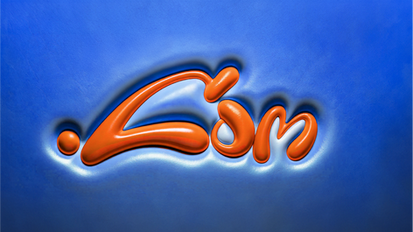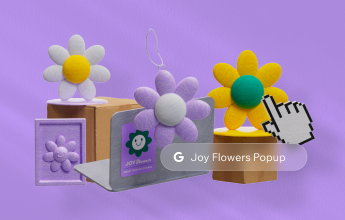The Benefits of AI Design My Website
Quick AI Design My Website Guide
AI Design My Website
In today’s digital age, having a strong online presence is crucial for any business looking to succeed. However, building a website can be a daunting and time-consuming task, especially for those who lack technical expertise. This is where AI website builders come in – they offer a quick and easy way to create a professional-looking website without the need for coding knowledge. In this article, we will explore some of the best AI website builders available in the market today.

AI Design My Website Best Practices
AI Design My Website
Building an online store that is beast-free can be a great way to attract eco-conscious consumers and differentiate yourself from the competition. There are a number of website builders that cater to this growing market, making it easier than ever to create a cruelty-free online store. In this article, we will take a look at some of the best beast-free website builders available, as well as some tips for building a successful online store that caters to ethical shoppers.
One of the most popular beast-free website builders is Shopify. Shopify is a user-friendly platform that allows you to create a professional-looking online store with ease. The platform offers a number of features and templates that are specifically designed for eco-friendly and cruelty-free businesses, making it a great choice for those looking to build a beast-free online store.
Another great option for building a beast-free online store is Big Cartel. Big Cartel is a smaller, indie-focused platform that is well-suited for artists, makers, and small businesses. The platform offers a range of customizable templates and features that are perfect for creating an ethical online store.
For those looking for a more budget-friendly option, Ecwid is a great choice. Ecwid is a versatile platform that can be easily integrated into your existing website or social media pages, making it a great option for small businesses and startups. The platform also offers a number of features that are specifically designed for eco-friendly businesses, making it a great choice for those looking to build a beast-free online store on a budget.
When building a beast-free online store, it is important to consider the types of products you will be selling. Look for suppliers that offer cruelty-free and vegan products, and make sure to thoroughly research the ingredients in each product to ensure that they are truly animal-friendly. This information can be included in your product descriptions and on your website to help build trust with your customers.
It is also important to consider your branding and marketing efforts when building a beast-free online store. Make sure that your website and social media pages clearly communicate your commitment to cruelty-free and ethical products. Consider partnering with animal rights organizations or influencers in the vegan and eco-friendly space to help spread the word about your brand.
As search engines like Google continue to prioritize high-quality, relevant content in their search results, businesses that invest in content marketing SEO are more likely to see success in their online marketing efforts. By creating content that is optimized for specific keywords and provides value to their target audience, businesses can increase their visibility in search engine results pages (SERPs) and attract more potential customers to their websites.
Here are some key tips for effectively implementing content marketing SEO strategies:
1. Conduct keyword research: Before creating any content, it’s important to conduct thorough keyword research to identify the most relevant and high-traffic keywords for your industry. By targeting the right keywords in your content, you can improve your chances of ranking higher in search results and attracting more organic traffic to your website.
2. Create high-quality, engaging content: Content marketing SEO is not just about stuffing keywords into your content – it’s about creating valuable, engaging content that provides value to your target audience. By creating content that addresses the needs and interests of your audience, you can increase engagement, build trust, and improve your chances of ranking higher in search results.
3. Optimize your content for SEO: Once you’ve created your content, it’s important to optimize it for search engines. This includes optimizing your title tags, meta descriptions, headers, and image alt text with relevant keywords, as well as incorporating internal and external links to other relevant pages on your website.
4. Focus on quality over quantity: While it’s important to consistently produce new content for your website, quality should always take precedence over quantity. By focusing on creating high-quality, relevant content that provides value to your audience, you can improve your chances of ranking higher in search results and attracting more organic traffic to your website.
5. Monitor and analyze your results: Lastly, it’s important to regularly monitor and analyze the performance of your content marketing SEO efforts. By tracking key metrics such as organic traffic, keyword rankings, and engagement rates, you can identify what’s working well and make adjustments to your strategy as needed.

AI Design My Website in 3 Steps
AI Design My Website
In today’s digital age, having a visually appealing and user-friendly website is crucial for the success of any business. A well-designed website can help attract new customers, build credibility, and increase conversion rates. However, designing a website is not as simple as it may seem. It requires a strategic and systematic approach to ensure that the final product meets the needs and expectations of both the business and its target audience. In this article, we will discuss the website design process in detail, outlining the key steps involved in creating a successful website.
Step 1: Define the Purpose and Goals
The first step in the website design process is to clearly define the purpose and goals of the website. This involves identifying the target audience, understanding their needs and preferences, and determining the desired outcomes for the website. For example, is the website meant to generate leads, drive sales, provide information, or showcase products and services? By having a clear understanding of the purpose and goals of the website, you can better tailor the design and content to meet these objectives.
Step 2: Conduct Research
Once the purpose and goals of the website have been defined, the next step is to conduct research. This involves analyzing the competition, researching industry trends, and gathering insights into the preferences and behaviors of the target audience. By conducting thorough research, you can gain a better understanding of what works and what doesn’t in your industry, helping you make informed design decisions.
Step 3: Create a Wireframe
After conducting research, the next step in the website design process is to create a wireframe. A wireframe is a visual representation of the layout and structure of the website, showing the placement of various elements such as navigation menus, headers, footers, and content sections. Creating a wireframe allows you to plan the overall design and functionality of the website before moving on to the visual design phase.
Step 4: Design the Visual Elements
Once the wireframe has been finalized, the next step is to design the visual elements of the website. This involves creating a visually appealing and consistent design that reflects the brand identity and resonates with the target audience. Elements such as color scheme, typography, imagery, and layout are carefully considered to create a cohesive and attractive design that conveys the desired message and engages users.
Step 5: Develop the Website
After the visual design has been approved, the next step is to develop the website. This involves coding the design into a functioning website using HTML, CSS, and other programming languages. During the development phase, the website is tested for functionality, responsiveness, and compatibility across different devices and browsers to ensure a seamless user experience.
Step 6: Test and Optimize
Once the website has been developed, it is essential to test and optimize its performance. This involves conducting usability tests to identify any usability issues, testing load times to ensure fast page speeds, and optimizing the website for search engines to improve visibility and accessibility. By testing and optimizing the website, you can ensure that it meets the needs and expectations of users, leading to better engagement and conversions.
Step 7: Launch and Monitor
The final step in the website design process is to launch the website and monitor its performance. This involves deploying the website to a live server, promoting it to the target audience, and tracking key metrics such as traffic, engagement, and conversions. By monitoring the performance of the website, you can identify areas for improvement and make informed decisions to optimize its effectiveness over time.


